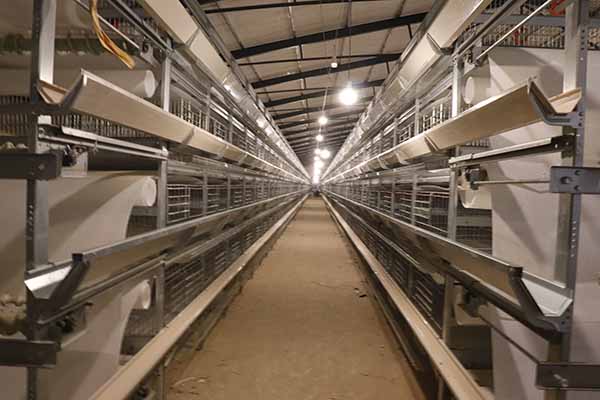Battery Cage System for 10,000 Laying Hens in Kenya: A Comprehensive Guide
Understanding the Battery Cage System
The battery cage system is a widely used method for commercial layer hen farming. It ensures efficient space utilization and improved biosecurity. In Kenya, where the poultry industry is rapidly growing, implementing a battery cage system for 10,000 laying hens can significantly enhance productivity and profitability.
Designing the System for 10,000 Laying Hens
To accommodate 10,000 laying hens, a well-planned battery cage system is essential. Here are the key factors to consider:
- Cage Dimensions: Each cage should be designed to provide adequate space for the hens to stand, turn around, and lay eggs comfortably. A typical cage size for laying hens is 0.5 square meters.
- Cage Arrangement: The system should include a sufficient number of rows and tiers to house the hens. For 10,000 hens, a layout with 20 rows and 50 tiers per row is recommended.
- Environmental Control: Ensure the system includes proper ventilation, lighting, and temperature control to maintain optimal conditions for the hens.
- Feeding and Watering: Implement an automated feeding and watering system to ensure consistent access to food and water.
- Manure Management: A system for collecting and disposing of manure is crucial for maintaining hygiene and reducing the risk of disease.
Cost and Benefits Analysis
The initial investment for setting up a battery cage system for 10,000 laying hens in Kenya can range from $100,000 to $150,000, depending on the quality of equipment and materials used. However, the benefits can be significant:
- Increased Productivity: Battery cage systems can increase egg production by up to 70% compared to traditional methods.
- Reduced Disease Risk: The closed environment minimizes the risk of disease transmission.
- Energy Efficiency: Automated systems reduce energy consumption and labor costs.
Case Study: Success in Kenya
A Kenyan poultry farmer recently installed a battery cage system for 10,000 laying hens. After six months, the farmer reported an increase in egg production from 2,000 to 4,000 eggs per day, a 100% increase.
Conclusion
Implementing a battery cage system for 10,000 laying hens in Kenya is a strategic move for poultry farmers and investors. With careful planning and attention to detail, this system can lead to substantial returns on investment.
For more information and a free, detailed chicken farming design and equipment quote, please leave a comment below or contact us directly.





